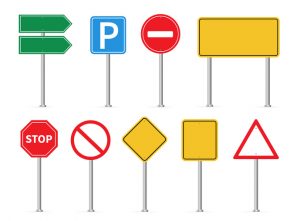 By Benito O. Pérez, CAPP, AICP CTP, CPM
By Benito O. Pérez, CAPP, AICP CTP, CPM
Whether you are a municipal entity operating a transportation system or a product provider or service delivery company providing support in the transportation space, you may be familiar that there are not only local and state standards on transportation assets and operations, but there are federal ones too. Whether it’s the “stop” sign, the pavement markings, or the parking sign, those “traffic control devices” are managed by standards set forth by the Federal Highway Administration (FHWA)’s Manual of Uniform Traffic Control Devices (MUTCD).
As stated by FHWA:
- The MUTCD contains the national standards governing all traffic control devices. All public agencies and owners of private roads open to public travel across the nation rely on the MUTCD to bring uniformity to the roadway. The MUTCD plays a critical role in improving safety and mobility of all road users.
- The MUTCD is the law governing all traffic control devices. Non-compliance with the MUTCD ultimately can result in the loss of federal-aid funds as well as in a significant increase in tort liability.
- Uniformity of traffic control devices is critical in highway safety and mobility, as well as cutting capital and maintenance costs of TCDs for public agencies and manufacturers.
- The FHWA has established a sound process to incorporate new devices and applications in the MUTCD. The process involves the Federal Register rulemaking activity, which encourages public involvement. Any interested person or organization may provide input to the rulemaking activity by submitting comments to the docket.
- The process encourages innovation and flexibility while maintaining uniformity.
- The success of the MUTCD depends on nationwide acceptance and application of the MUTCD, as well as extensive participation by the practitioners in developing and evaluating the content of the MUTCD.
- Input from practitioners and all other stakeholders is critical in keeping the MUTCD current and relevant.
To that last point, FHWA has opened up a comment period for all interested parties to provide feedback on proposed changes (or propose their own suggestions) for the latest edition of the MUTCD. For perspective, the last major update of the MUTCD was published in late 2009 (more than a decade ago), with limited amendments in the succeeding years. Now’s your chance to chime in on the direction of traffic control devices. Check the federal register post for MUTCD here.
Benito O. Pérez, CAPP, AICP CTP, CPM is curbside management operations planning manager with DDOT.
